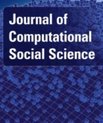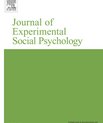The Perception of Spontaneous and Volitional Laughter Across 21 Societies
Article published in Psychological science
Abstract
Laughter is a nonverbal vocalization occurring in every known culture, ubiquitous across all forms of human social interaction. Here, we examined whether listeners around the world, irrespective of their own native language and culture, can distinguish between spontaneous laughter and volitional laughter—laugh types likely generated by different vocal-production systems. Using a set of 36 recorded laughs produced by female English speakers in tests involving 884 participants from 21 societies across six regions of the world, we asked listeners to determine whether each laugh was real or fake, and listeners differentiated between the two laugh types with an accuracy of 56% to 69%. Acoustic analysis revealed that sound features associated with arousal in vocal production predicted listeners’ judgments fairly uniformly across societies. These results demonstrate high consistency across cultures in laughter judgments, underscoring the potential importance of nonverbal vocal communicative phenomena in human affiliation and cooperation.
Article
Gregory A. Bryant, Daniel M. T. Fessler, Riccardo Fusaroli, Edward Clint, Dorsa Amir, Brenda Chávez, Kaleda K. Denton, Cinthya Díaz, Lealaiauloto Togiaso Duran, Jana Fan?ovi?ová, Michal Fux, Erni Farida Ginting, Youssef Hasan, Anning Hu, Shanmukh V. Kamble, Tatsuya Kameda, Kiri Kuroda, Norman P. Li, Francesca R. Luberti, Raha Peyravi, Pavol Prokop, Katinka J. P. Quintelier, Hyun Jung Shin, Stefan Stieger, Lawrence S. Sugiyama, Ellis A. van den Hende, Hugo Viciana-Asensio, Saliha Elif Yildizhan, Jose C. Yong, Tessa Yuditha, Yi Zhou (2018). The perception of spontaneous and volitional laughter across 21 societies. Psychological science, 29(9), 1515-1525.
Contact
Riccardo Fusaroli, Associate Professor, IMC and School of Communication and Culture



